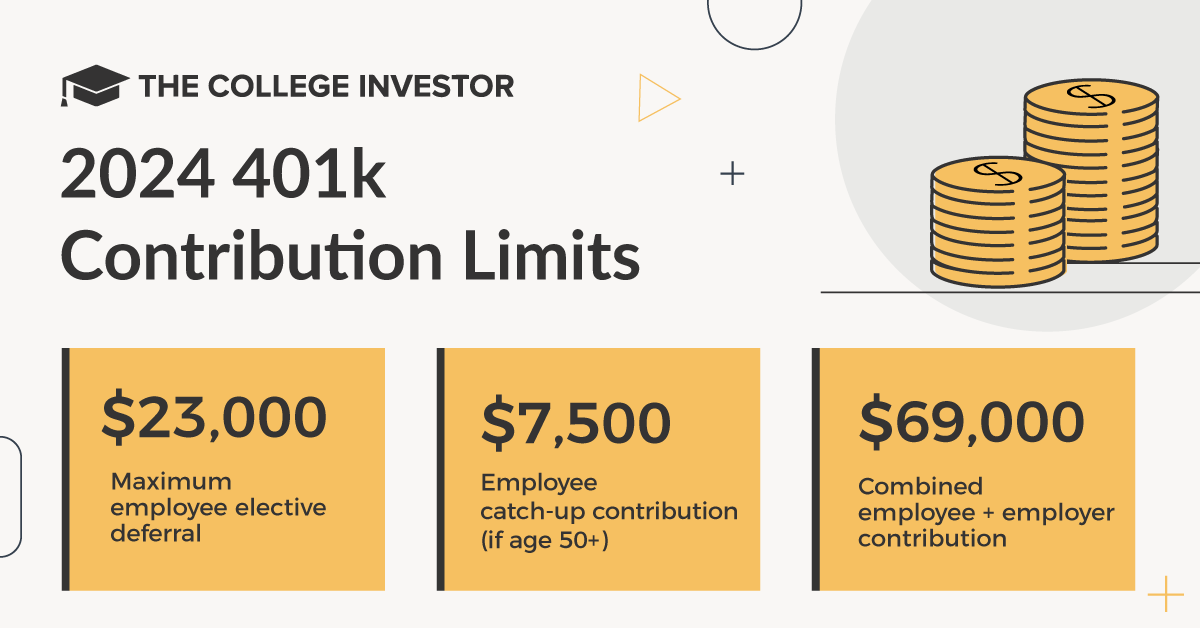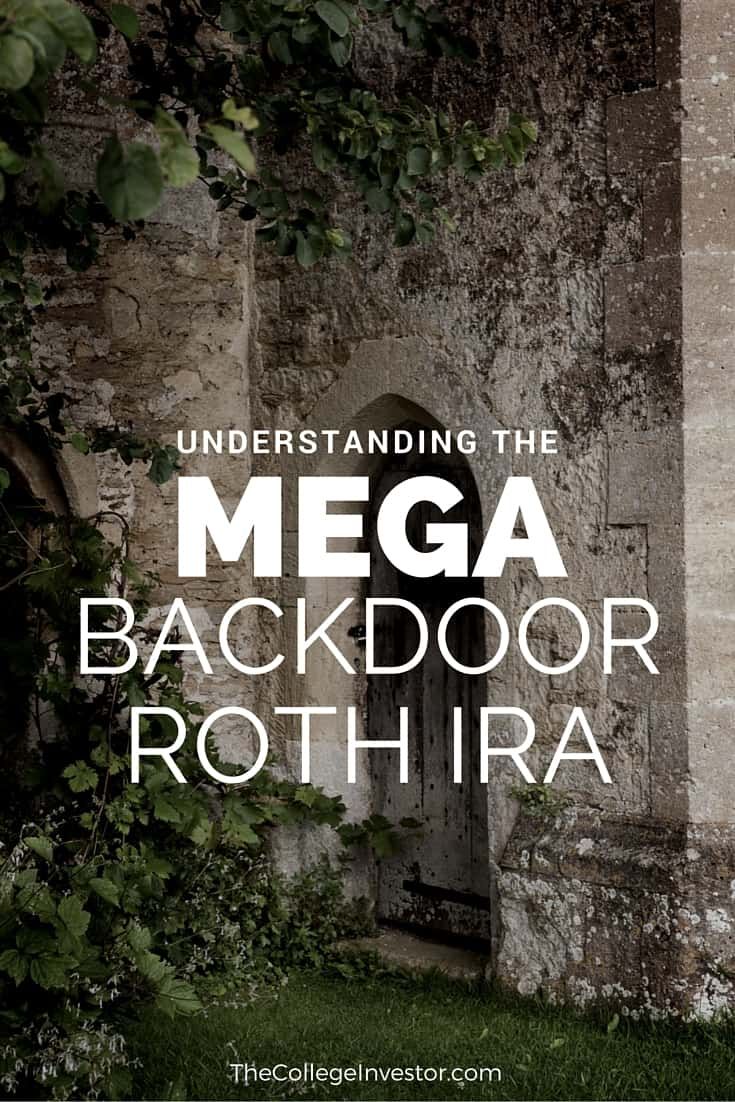
There has been a lot of talk lately about the mega backdoor Roth IRA. For a long time, it was an unspoken secret used by retirement planners. However, the IRS released guidance that specifically addressed both backdoor Roth IRA conversions, and the so-called Mega Backdoor Roth IRA. As a result, it has gained even more popularity and interest.
So what is the Mega Backdoor Roth IRA? The Mega Backdoor Roth IRA allows you to contribute an additional $46,000 into an Roth IRA by leveraging the fact that some employer 401k plans allow after-tax contributions up to the current limit of $69,000.
Wait, what? I thought the Roth contribution limit in 2024 is $7,000 (and $8,000 if you're over 50). How can you contribute over 6x that amount?
Let's dive into a little background, and then show how the process works.
First: Why A Roth vs. Traditional vs. 401k
I think it's important to first have a discussion on why this even matters. Because, for some people, it doesn't matter.
Who This Article Doesn't Apply To:
- If you don't max out your 401k contributions and your IRA contributions currently (this means putting in $23,000 pre-tax to your 401k, and $7,000 to your IRA)
- If you don't meet the income limitations to have a deductible IRA (if you can deduct your IRA contributions, do that)
- If your employer doesn't offer after-tax 401k contributions (you might still want to read this and be in the know, but it won't help you and I'm sorry your employer sucks)
Why Bother With A Roth vs. A Traditional IRA vs. A 401k
Without dragging on a long conversation here, we have an amazing article on when to contribute to a Roth IRA vs. a Traditional IRA. It's a long one, but it goes into detail about the tax consequences of each. I highly recommend you leverage that article as a basis for this.
But honestly, tax diversification is one of the biggest reasons to consider this strategy. It can be benefit to be able to take advantage of both taxable and tax-free accounts in retirement. It *might* also be a benefit to pay any potential taxes today to enjoy tax-free retirement later. It really depends on your tax situation, but if you're already reading this far, you likely know that already.
Background: A Regular Backdoor Roth IRA Conversion
The Backdoor Roth IRA Conversion is an indirect way to contribute to a Roth IRA when you are not eligible to contribute directly due to high income.
Remember, to be able to fully contribute to a Roth IRA, you have to meet the following income limits (as of 2024):
Roth IRA Contribution Income Limits 2024 | ||
|---|---|---|
Single Filers | Married Filing Jointly | |
Phase Out Starts | $146,000 | $230,000 |
Ineligible To Contribute | $161,000 | $240,000 |
If you make more than the income limits, and have earned income, you can still contribute to a non-deductible traditional IRA. The Backdoor Roth IRA uses this tactic to then convert the non-deductible traditional IRA contribution into a Roth account.
Here's briefly how it works in three steps.
Step 1 - Ensure You Don't Have Any Other Pre-Tax IRA Accounts
To avoid many complexities and potential problems, you should eliminate any traditional IRAs, SEP IRAs, or SIMPLE IRAs, unless you are looking to convert those into Roth IRAs. You can eliminate them by rolling them over into an employer sponsored plan, such as a 401k, 403, or 457. This is called a reverse IRA to 401k rollover. You will then be leveraging this employer sponsored plan for the Mega Backdoor Roth IRA.
Remember, you can also only rollover pre-tax money, so any previous non-deductible contributions are not eligible for this.
Step 2 - Make A Non-Deductible IRA Contribution
Once you've eliminated all your traditional IRA accounts, it's time to actually start contributing to your Backdoor Roth IRA. This is the easy part.
Simply open a Traditional IRA Account and a Roth IRA Account at the same firm (you might already have this). Then, contribute $7,000 (the 2024 limit) as a non-deductible contribution to your Traditional IRA.
Step 3 - Convert The Traditional IRA To The Roth IRA
This step is also pretty easy, but there are some caveats. First, you should wait at least one day after the money clears the deposit into your Traditional IRA before converting it. The IRA has no guidelines on this, but it's good to show a clear step-by-step process of how you converted.
For many online brokerage firms make this step pretty easy, but it can be scary. At most firms, you simply transfer the balance from the Traditional IRA to the Roth IRA. That's it. Others might make you sign a form. Almost all will warn you about the tax implications of this, which is the "scary" part of the transaction.
We're fans of Charles Schwab as our brokerage because they offer no-fee IRAs, and commission-free trades. Open a Schwab account here for free.
We're not tax experts, but here's a great guide on how to report the taxes on your backdoor Roth IRA.
How The Mega Backdoor Roth IRA Works
Okay, now that you've had the refresher on the Backdoor Roth IRA, how does the Mega Backdoor Roth IRA work? Well, it takes advantage of the fact the after-tax contributions to a 401k plan are treated just like a Traditional IRA in the above example of the Backdoor Roth.
It's a different process, but similar. But it requires that you have an employer 401k that allows after-tax contributions. We're not talking Roth contributions, but after-tax contributions.
A note on after-tax 401k contributions. Remember, the IRS limits on total 401k contributions is $69,000 in 2024. That means that you can contribute $23,000 pre-tax, and your employer typically contributes something. Some 401k plans then allow employees to contribute the remaining amount in after-tax contributions.
For example, let's say your employer matches you $6,000 into your 401k. You can contribute $23,000 pre-tax, your employer puts in $6,000, and that leaves you $40,000 that you can potentially contribute after-tax if your employer allows it.
Or, if you have a solo 401k, you can setup your plan to allow it! This is huge for small business owners.

Your 401k Plan Must Meet Specific Criteria To Do A Mega Backdoor Roth IRA
In order to do a Mega Backdoor Roth IRA, your 401k plan needs to offer:
- After-Tax Contributions Above and Beyond the $23,000 Pre-Tax Contribution Limits
- In Service Distributions Or Non-Hardship Withdrawals
If your 401k plan doesn't offer non-hardship in service withdrawals, you might still be able to accomplish the same thing if you're leaving your company soon.
And there is also thoughts that even if you can't do in-service withdrawals, it still might be very worthwhile.
You can then max out your 401k with after-tax contributions up to the contribution limit each year. You can then withdraw that money into a Traditional IRA, and do the same process as a Backdoor Roth IRA.
Sadly, a company that allows both after-tax contributions and in service distributions are rare. Check with your benefits manager before you proceed.
A Step By Step Process For Doing A Mega Backdoor Roth IRA Conversion
Time needed: 1 hour.
The process for doing a Mega Backdoor Roth IRA Conversion is very similar to a regular backdoor IRA, just substitute your after-tax 401k for a traditional IRA.
Remember, your plan must qualify and you must be very careful to do this correctly.
- Maximize Your After-Tax 401k Contributions
The first additional step for the Mega Backdoor Roth IRA is that you need to figure out how much to contribute to maximize your after-tax 401k contributions.
This means understanding your employer's plan, and then making the additional contributions. This can be a challenge because many plans require you to specify a percentage of your paycheck, versus a set amount. You also want to make sure that these contributions are AFTER-TAX, NOT Roth 401k contributions. - Withdraw The After-Tax Portion To A Roth IRA
Once you've maxed out your after-tax contribution, you can withdraw that portion to a Roth IRA if your employer allows in-service non-hardship withdrawals.
Otherwise you need to wait until termination, and you can rollover the after-tax portion into a Roth IRA. The downside to waiting is that any growth from After Tax contributions becomes part of the Pre Tax balance (unlike Roth dollars).
Note: If you have any earnings on the after tax portion, that amount is taxable on the transfer (since it was tax free growth in your 401k). However, if you're doing the transfers regularly, the earnings should be minimal.
If you have excessive earnings, you should transfer the contributions to a Roth IRA and the earnings to a traditional IRA. Keep accurate records.
Alternate Approach: An “alternate” Mega step 2 would be if the 401k allowed In-Plan Roth Conversions (IRS calls it In-Plan Rollovers to Designated Roth Account). With this, you can simply click a button with your 401k provider and rollover the after-tax portion to the Roth Account.
This Works Great For Solo 401k Owners
Even though many companies don't allow in-service distributions and after-tax contributions, for solopreneurs that have a solo 401k, this can be a great option to maximize your Roth money.
With a solo 401k, you can only contribute roughly 25% of your pre-tax income to your 401k plan. For many business owners, this may not hit the limit of $69,000 (in 2024). However, since you're the keeper of your own plan, you can ensure that your plan allows after-tax contributions AND in-service withdrawals.
So, let's say you can only contribute:
- $23,000 in elective contributions
- $23,000 in profit sharing contributions
That only adds up to $46,000 in contributions. You could theoretically contribute another $23,000 in after tax contributions to your solo 401k, which you could then roll over as a mega-backdoor Roth IRA. That's huge!
The trick here is to create a plan that allows this. You cannot do these plans at any of the "free" solo 401k providers.
Take a look at the following as they should allow it if you ask for it to be created as part of your plan:
- Nabers Solo 401k - Create a self-directed solo-401k with checkbook control. Read our Nabers 401k Review.
- My Solo 401k - They can create a custom plan for $550 plus an annual fee of $125. Read our MySolo401k Review.
Conclusion
The Mega Backdoor Roth IRA is another potential tool to maximize tax savings IF you have more bandwidth for savings. This strategy is really for people who are maximizing their savings in other avenues first: 401k, IRA, HSAs, 529s.
It also works really well for people who are looking to make early withdrawals from their IRA or 401k.
If you still need or want more tax sheltered savings, then this is potentially a great strategy if your employer allows it.

Robert Farrington is America’s Millennial Money Expert® and America’s Student Loan Debt Expert™, and the founder of The College Investor, a personal finance site dedicated to helping millennials escape student loan debt to start investing and building wealth for the future. You can learn more about him on the About Page or on his personal site RobertFarrington.com.
He regularly writes about investing, student loan debt, and general personal finance topics geared toward anyone wanting to earn more, get out of debt, and start building wealth for the future.
He has been quoted in major publications, including the New York Times, Wall Street Journal, Washington Post, ABC, NBC, Today, and more. He is also a regular contributor to Forbes.
Editor: Clint Proctor Reviewed by: Ashley Barnett
